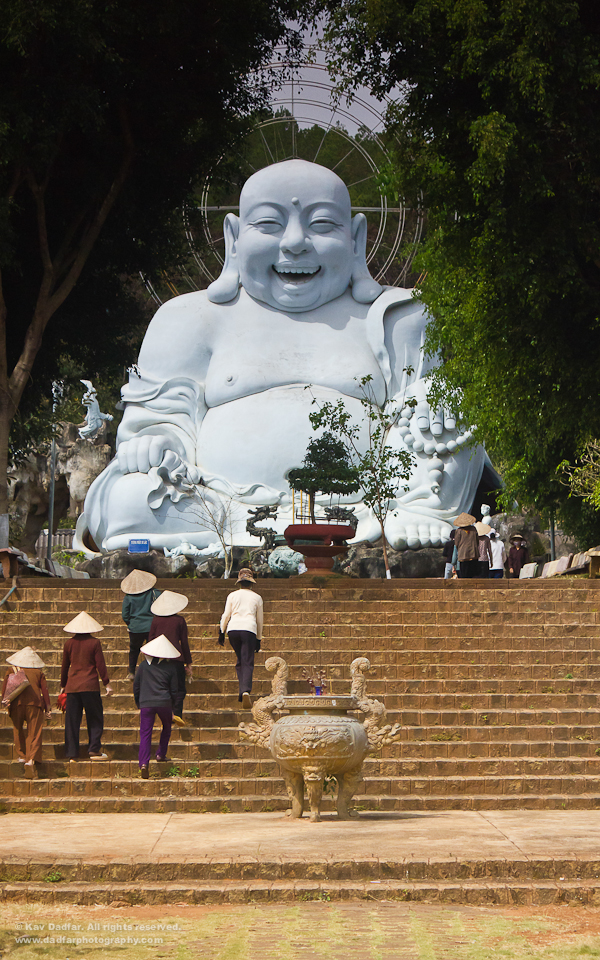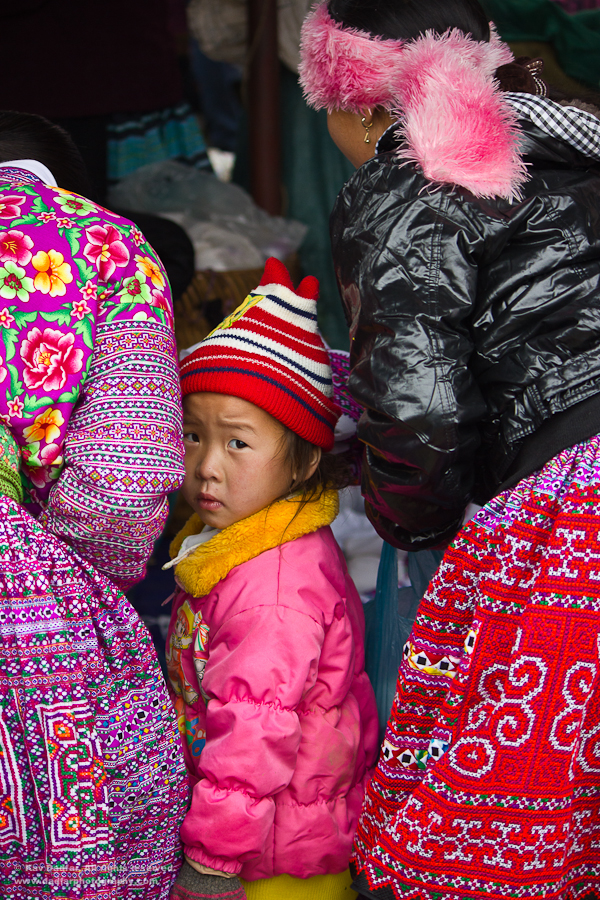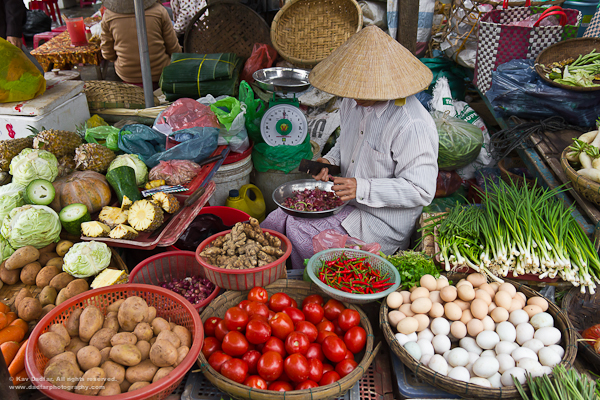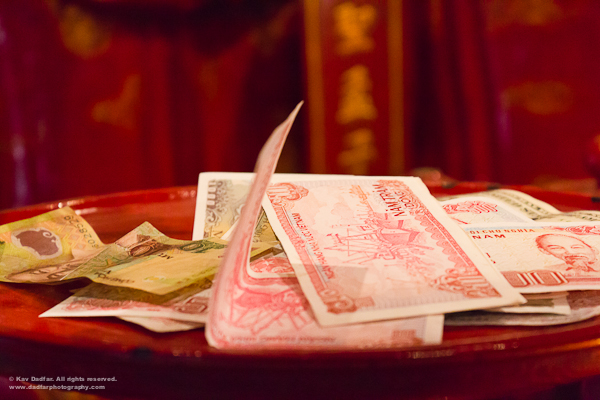Vietnam has certainly had its ups and downs through history. But having opened its doors to tourists many years ago, it’s a country that is perfect to photograph. From the bustling chaos of the cities to the picturesque and rural northern regions, its an ideal place to add to your photography portfolio.
1. GET OFF THE BEATEN TRACK

Unfortunately the days of Vietnam being a mystery are over. Go to any image library and type in Halong Bay or Saigon and see how many images come up. To capture stand out images you need to seek out new places.
For example, I wasn’t expecting to find a scene as iconic as the one above when I was exploring a monastery on the outskirts of Dalat. As I walked up I noticed that the trees on either side were providing a natural frame for the giant Buddha, but I also wanted a human element in the shot. A few minutes later a group of Vietnamese women began walking up the steps so I started shooting until they reached the top and chose the best composition later in post production.
2. CHOOSE YOUR HOTEL CAREFULLY

When possible, book a hotel with a roof terrace or balcony as this is one of the best ways of getting great shots of your surroundings. And as hotels in Vietnam are so affordable you should have a whole host of places to choose from. I stayed in this hotel in Ho Chi Minh (Saigon) next to the Ben Than market because of it’s high, vast roof which provided me with a 360 degree view of the city. So during my stay I tried shooting at different times of the day until I was happy with the results.
3. BE READY

One of the things that really struck me about Vietnam was the pace of everyday life, and as a photographer you always need to be on the lookout and ready for opportunities. Your camera should be out of its case or bag, switched on and with the lens cap off.
The last thing you want is to miss a great opportunity because you weren’t prepared and always beware of thieves. For the shot above I was standing in a market when I noticed a young local girl opposite looking at me.
I knew I only had a few seconds to get the shot before she moved or my view was obstructed so I quickly lifted my camera, pointed to it so that she knew I was going to take her picture and managed to capture two shots before she shied away. One was blurred the other was this.
4. HEAD TO THE MARKETS

Vietnamese markets are a great way of getting close to the buzz of everyday life, and should absolutely be on every photographer’s shot list. Try to capture people, whether it be shoppers or market vendors going about their day to give your images a sense of realism without looking posed or contrived.
5. GET UP CLOSE
 Robert Capa, a famous war photographer, once said “If your pictures aren’t good enough, you aren’t close enough”. Sometimes, even though the wider shot can make a good photo, finding something within it for a close up could make a fantastic photo.
Robert Capa, a famous war photographer, once said “If your pictures aren’t good enough, you aren’t close enough”. Sometimes, even though the wider shot can make a good photo, finding something within it for a close up could make a fantastic photo.
The image above is of some money left at a shrine in a small, local temple. A photo of the temple would have been one of thousands and the shrine wasn’t visually appealing so I chose to take a unique, close up shot of the money offering instead.
6. CAPTURE THE ESSENCE OF THE PLACE

One of the most fascinating things about Vietnam is the difference between it’s cities and towns from one another. From the ordered chaos of Hanoi to the serenity and beauty of Hoi An, it’s our job as photographers to capture that in a picture. For me the image above defines Hoi An and captures its beauty and calmness. So when exploring a city, a town or a village think about how you could show that place in just one picture.
Kav Dadfar is a travel photographer based in London. To see more work visitwww.dadfarphotography.com
